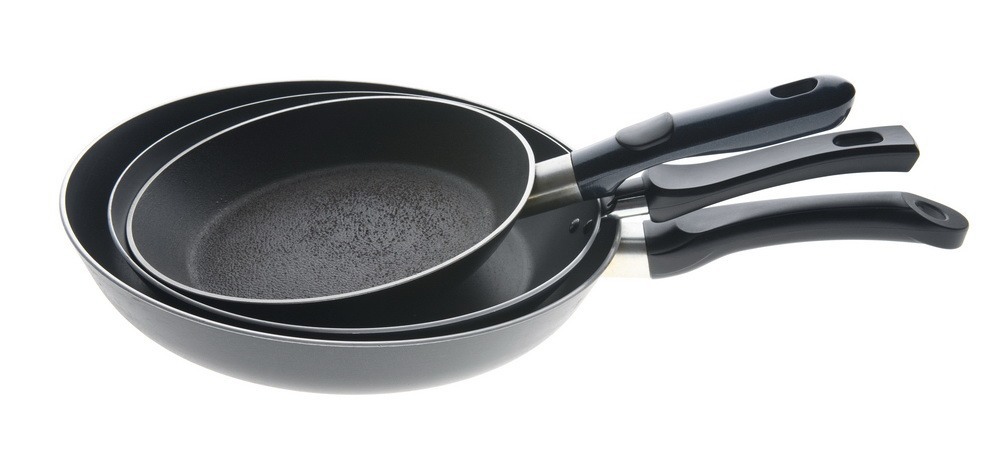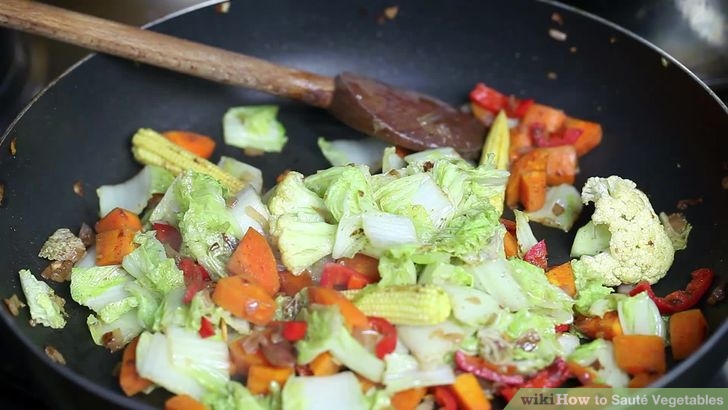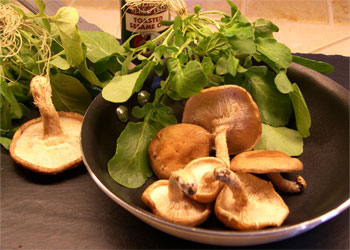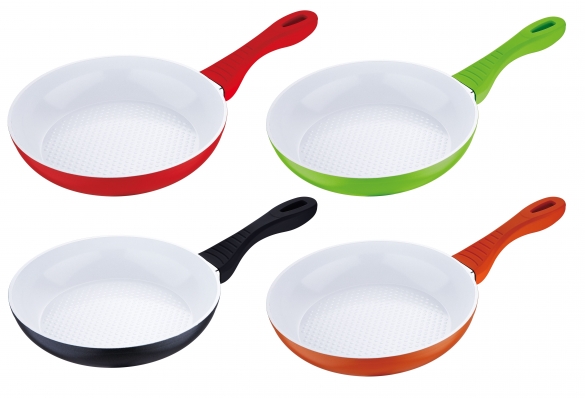Non-Stick Cookware—How Safe IS It?
I’m often asked if using non-stick cookware is a safe practice. It’s a good question and since there’s more and more research and innovation going on around this type of cookware, there are some good answers available.

The most familiar non-stick coating is Teflon, also known as polytetrafluoroethylene—PTFE—which has been in use since the 1940s. And, as you probably know, Teflon appears to be inert and safe unless heated to high temperatures. Then, it emits fumes toxic enough to poison birds. The exact temperature at which this occurs is not clear. The manufacturer, DuPont, has long acknowledged that heating Teflon cookware to temperatures as low as 464 degrees Fahrenheit is harmful to birds but has said that the fumes aren't a problem for humans because most consumers don't exceed that temperature when cooking.

Beware though, this temperature can happen quickly: an empty pan can reach this temperature in two to five minutes. Beyond this temperature, the coating will begin to decompose. When temperatures reach 660 degrees and higher, strong fumes can be released that could make you feel a little sick. And as for ingesting a small piece of the nonstick coating, experts at the EPA say that the particle would most likely pass through the body without making a person sick.
So the bottom line is that while non-stick skillets are very convenient and can lend to healthier cooking, they’re safe if used for controlled-temperature cooking. Here are 10 tips for safer non-stick cookware use, shared by cooking instructor, Cathy Fisher (author of the great cooking site, Straight Up Food—www.straightupfood.com).

Following these tips will also lengthen the life of your cookware:
1. Use pans on low or medium heat only (not high heat). Overheating can cause the coating to break down, which can result in the release of toxic particles and/or gases. (Keeping the heat down also extends the life of your pan.)
2. Cover a majority of the pan’s surface with whatever you’re cooking, as this will keep the pan’s temperature down.
3. Only preheat nonstick pans on medium or low. I like to put a tablespoon of water into my pan as it heats up, and when the water starts to sputter and cook off, I know the pan is ready for the food.
4. Don’t use nonstick pans over “power burners” (anything above 12,000 BTUs on a gas stove or 2,400 watts on an electric range).
5. Use high quality nonstick cookware. Cheap, lightweight nonstick pans heat up faster (not good), so invest in a good quality, heavier-bottomed pan. These cost more but will cook more evenly, last longer, and be safer.
6. If you tend toward cooking only on high heat or walking away from your stove, don’t use nonstick cookware; or use a good quality ceramic cookware made with nontoxic glaze.
7. Ventilate your kitchen, and use your exhaust fan to take up any fumes.
8. Don’t put your nonstick pans in the dishwasher; they will last longer.
9. Avoid scratching or chipping your nonstick pans. Toward this, use wood or silicone utensils instead of metal, and don’t use steel wool to clean your pans. Also, don’t stack your nonstick pans (or if you do, put towels between them).
10. Replace moderately used nonstick cookware every three to five years. If your pan becomes damaged for any reason before this, don’t keep using it; replace it.

There’s a new kid on the block now, though, that I’m crazy about. It’s ceramic. Ceramic is a newer material in the world of nonstick cookware. It’s widely considered to be the safest and most environmentally friendly option. Ceramic is free of PTFE and PFOA, which means you won’t be dealing with the high temperature issues that Teflon presents. And unlike Teflon (which only comes in black), ceramic coatings come in a wide variety of styles and colors.
Because ceramic cookware is a relatively new technology, there have been many advances in quality in recent years. For instance, manufacturers are applying more layers of ceramic, so the coatings are getting thicker. Thicker coatings mean longer life-spans. Look for more impressive improvements in ceramic cookware in the coming years.

So non-stick cook ware—whichever approach you choose—it’s definitely safe if you use it properly and take good care of it. Such good news for the non-oil cooks in the audience!
- www.healthambition.com
- www.wikihow.com
- www.chemours.com
- www.naughtycurry.com
- www.twokitchenjunkies.com
 Alice Osborne
Alice Osborne
Weekly Newsletter Contributor since 2006
Email the author! alice@dvo.com
